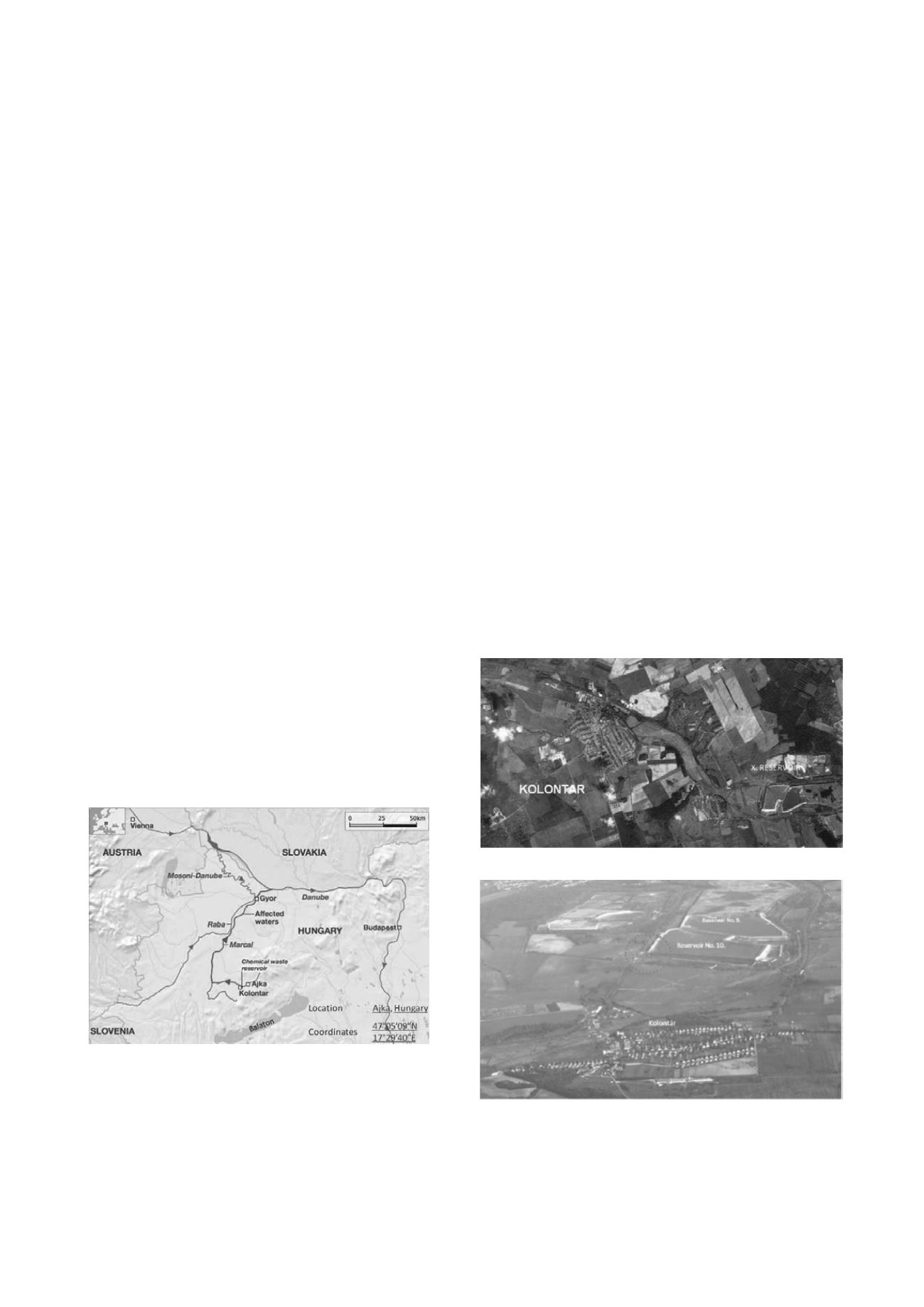
3309
Some Technical Aspects of the Tailing Dam Failure at the Ajka Red Mud Reservoirs
Quelques aspects techniques de la rupture d’une digue de retenue de boues à Ajka
Mecsi J.
University of Pécs, Engineering and Information Technology, Hungary
ABSTRACT: On October 4, 2010 at 12:25 the North-western part of the dam of the no. 10 red mud reservoir in Ajka (Hungary) has
collapsed, and near one million m
3
alkaline red mud mixed with water has plunged in the valley of the Torna stream. The red mud
flooded the valley-side parts of the village Kolontár and the town Devecser, then trough the Marcal river it has reached the river
Danube in very short time. 10 people died, 123 injured, 260 houses became uninhabitable, and significant ecological damage
occurred. This presentation aims at providing an informative fact-based description of the complex reasons resulting in dam ruptures.
RÉSUMÉ : Le 4. octobre 2010 à 12:25 la section Nord-Ouest de la digue de retenue du réservoir No 10 de boues rouges à Ajka, en
Hongrie, s’écroulait. Environ 1 million m
3
de mélange de boues rouges alcalines et d’eau était déversé dans la vallée du ruisseau
Torna. Les boues rouges recouvrirent les bords de la vallée dans le village Kolontár et dans la ville Devecser, puis atteignirent le
Danube par le petit fleuve Marcal. Suite à l’accident, 10 personnes ont été tuées, 126 personnes blessées et 126 maisons sont devenues
inhabitables. Egalement, les dégâts écologiques furent considérables. Le but principal de cette présentation est de donner une
description objective des causes complexes de cette rupture du digue de retenue, basée sur les faits matériels.
KEYWORDS: tailing dam collapse, red mud reservoir,
1 INTRODUCTION
In Hungary three alumina plants have been built. One of them in
the vicinity of Ajka town has been operational since 1942, and
collected red mud in a reservoir in the valley of the Torna
stream. The product of alumina production, 15.7 million m³ of
red mud was deposited in 10 reservoirs in the valley of the
Torna stream. The red mud is a waste product of the Bayer
process. Bauxite is crushed and ground in mills and heated;
alumina is precipitated by washing the bauxite with a hot
solution of sodium hydroxide (NaOH) under pressure.
Fig.1.The site and affected localities,
)
Around 24-45 percent of red mud is ferrous oxide, but it also
contains other metallic compounds. Red mud is not poisonous,
but it is a hazardous material, due to its sodium hydroxide
content. This highly alkaline (pH 12-13) material was
transported by pipeline to reservoirs.
On October 4, 2010 the northwestern part of the dam of red
mud reservoir No. 10 has collapsed, and near one million m
3
alkaline red mud mixed with water has plunged in the valley of
the Torna stream. Fig. 1.-Fig4.
Fig.2. Natural-color satellite image of the area surrounding the spill
Fig.3. Natural-colour satellite image of the area surrounding the spill
(
)
The red mud flooded the valley-side parts of the villages, then
trough the Marcal river it has reached the river Danube in very


